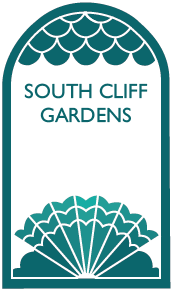As I write this blog it is exactly a year since we welcomed people into the Italian Gardens for our first event of 2020 The RSPB Big Garden Birdwatch, little did we know at the time what the next twelve months held in store or how different our social interactions would become. Back then we were looking forward to a fun packed year of activities but it quickly became apparent that this wasn’t going to be the year we had planned and also that the gardens still had an important role to play in the lives of local people as they have for generations.
Numerous reports have come out on the benefits of engaging with nature during these challenging times and on my own visits to the gardens over the past year it has been so encouraging and heart-warming to see them in use by people of all ages and in so many different ways. I also find that there is something deeply satisfying in seeing pictures of people across the years enjoying the same spaces we still use today whether its folk at the turn of the century promenading on the Italian Step’s, a couple in the 30’s enjoying a friendly game on the putting green or a family in the 60’ having a picnic in the Italian Gardens this sense of shared experience endures.
After Scarborough became a popular sea bathing resort in the 1700’s on the back of the discovery of the sap waters the south side of the town began to take on the shape we recognise today. It was the 1800’s when the gardens really began to be transformed and it must have taken vast imagination, vision and flat out determination to turn sixty four acres of diverse cliff side terrain into an interconnected series of fashionable pleasure gardens.
It was a member of the Cliff Bridge Company, George Knowles who began to form the gardens we have today, planting the bare cliff face with trees and laying out the first formal paths on the cliff sides. By the mid 1850’s the gardens even had a head gardener, William Skipsey who stayed in the post for over 30 years.
In their early stages the gardens were created for the use of wealthy visitors who flocked to the town. Fencing, gates and a toll for entry ensuring their exclusivity but that was all set to change when in the early 1900’s the ownership of the land on South Cliff changed hands to the Scarborough Corporation and the gardens became public property.
I was surprised to discover that the Italian Gardens were a late addition to the gardens, created after the public purchase by Borough engineer and local legend Harry W Smith. Construction began in 1912 and just two years later the people of Scarborough faced a global crisis, the First World War. Sadly the town was not immune to its effects. On December 16th 1914 Scarborough was bombarded with 500 German shells fired from two war ships, 17 people lost their lives. The gardens themselves were caught up in the attack when men working on the construction of the now lost bathing pool found themselves under fire, fortunately they were able to take shelter behind a newly constructed wall and all survived.
The gardens have survived through all manner of global and national emergencies and if they could talk would doubtless have thousands of fascinating tales to tell. They played their part during World War Two when the private tunnel which runs under the Esplanade and connects with the gardens was repurposed as a bomb shelter, whilst the Spa building, bathing pool and changing rooms were all converted into military training centres with the Clock Café repurposed for RAF navigation training.
There is so much fascinating history surrounding the gardens and the people who have cherished them throughout the years and we would love to hear your stories so if you have any memories or pictures you would like to share please get in touch.
Gemma Alexander – South Cliff Gardens Community Engagement Officer
Gemma.alexander@scarborough.gov.uk
https://www.facebook.com/southcliffgarden


Comments are closed